
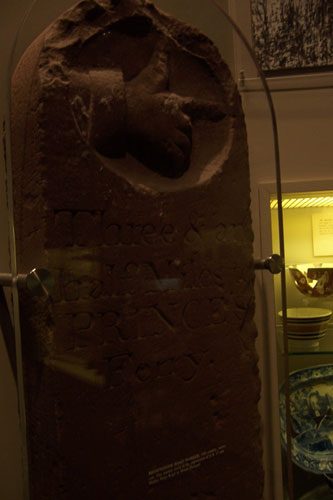 |
The Charleston Museum began with your typical local museum fare: objects from Charleston/Lowcountry history, including settlement, dealings with Native Americans, slavery/ plantations/ rice farming, and Civil War stuff. |
| Then suddenly the museum collection goes in entirely different directions. First natural history, then eventually (not much later—it’s a small museum), I ended up looking around confusedly at plasters of Egyptian tombs/statues—gifts from the British Museum. |
Luckily, there was a plaque to explain: “The Charleston Museum, founded by the Charleston Library Society in 1773 is the oldest museum in North America…. The Museum’s early collections reflected the broad interests of Charleston’s citizens. They include items from around the world. Although the Museum now collects only items related to Charleston and the Lowcountry, it retains those required since the 1790s.”

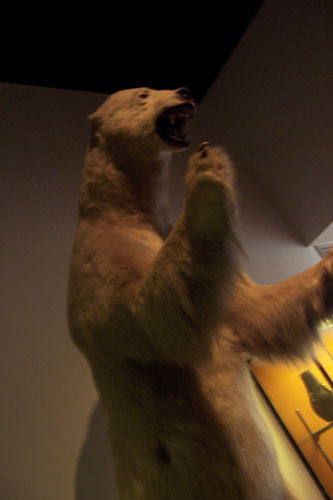 |
My favorite (sorry about the horrible photo, but you get the point): “Charleston’s Polar Bear”—“This specimen was taken by Henry J. Blackford Jr. from a frozen section of the Arctic Ocean off Kotzebue, Alaska on April 19, 1961. In the years since, it has become an extremely popular local icon and remained a favorite among children everywhere – despite having no connection to the South Carolina region whatsoever.” |



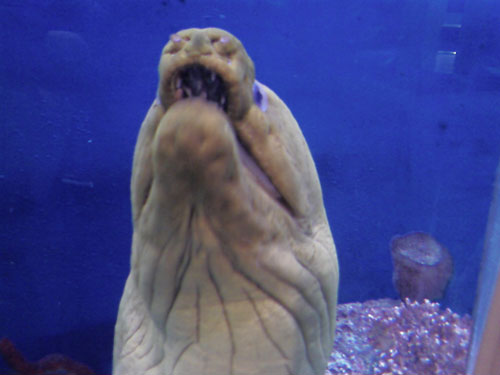
3. Fort Sumter
Six flags over Fort Sumter:


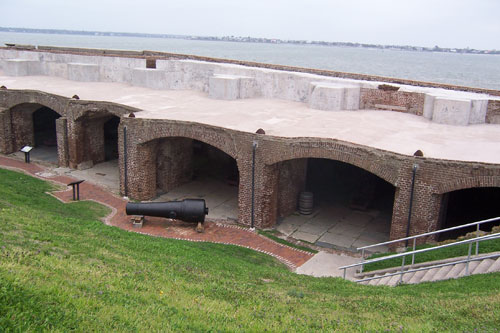
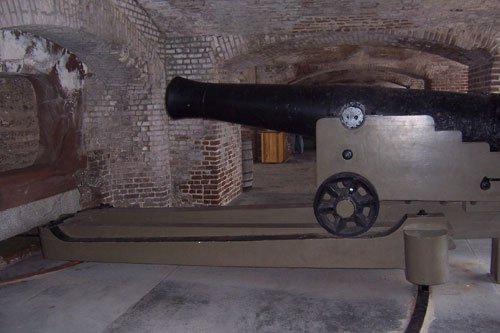
Warning: History lesson (i.e., if history bores you, tune out now).
Fort Sumter was built after the War of 1812 to fortify the coast, as Charleston Harbor had nothing really preventing entrance to it. (Side note: The War of 1812, which seems to get a tad overlooked—at least I don’t know much about it—came up twice on this trip. The first was to note that when the British burned down the U.S. Capitol it was “very embarrassing for us”—according to my Library of Congress tour guide.) Fort Sumter is built on a man-made island. Info in the fort museum: “About 70,000 tons of granite and other rock, plus sand and shells were brought to the shoal in Charleston Harbor to provide a foundation for the fort. Much of the material came from the North.”

Construction still wasn’t finished on the fort when U.S. Army Major Anderson moved his men there from Fort Moultrie in December 1860 trying to delay a Rebel attack. It was incomplete, and there weren’t enough cannons or guns (or men for that matter), so Anderson had a tough time when the Confederacy finally decided to open fire, and he sagely surrendered the next day. The Confederacy held the fort for the rest of the war until General Sherman and his march.
History lesson ended.

There was a museum at the fort, which I didn’t spend much time in. (It started raining while I was there, and I wanted to get back on the boat.) There was also a museum you can peruse before the boat ride to the fort, which I examined in detail because I got there well before the boat was scheduled to leave. This first museum focused on what led up to those ‘first shots of the Civil War.’ Honest question (from vague hints at this museum): Was it brave/noble for Lincoln to refuse to acknowledge South Carolina’s independence when it seceded, or was it tyrannical? Is he a hero who held a nation together? Or a villain?
To put this into a different perspective: The U.S. and other European powers recently recognized Kosovo as an independent nation, but Russia and Serbia refuse to, for what they undoubtedly consider legitimate reasons.
4. College of Charleston and other random wonders seen while wandering


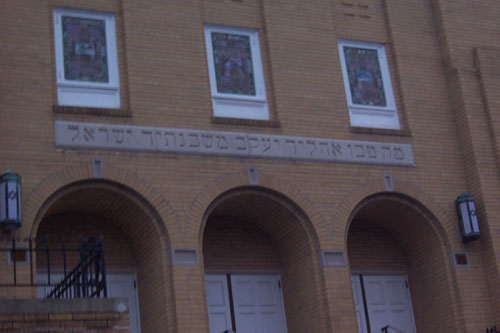


i can’t wait for our adventures.